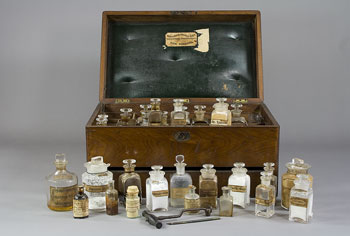Illness and Disease
The threat of illness and disease was ever present given the harsh conditions and limited food supply aboard a whaleship. Because they could not carry fresh fruits and vegetables, scurvy was always a risk and in some cases could be fatal. Poor diets also led to other problems such as rickets and food poisoning. Whale crews were also vulnerable to diseases common to that time including Smallpox, Yellow Fever, Typhus and plague.
Injury and Infection
The hard work aboard the ship was inherently dangerous. Decks slick with oil and blood meant for slippery footing at best. Since few sailors in the 1800s were able to swim, a fall overboard could mean drowning, while the sharp-edged tools used for hunting and cutting in the whale could cause injury both by accident and, on occasion, when one angry shipmate attacked another. Wounds could easily become infected and there was always a risk of getting tetanus since no vaccine existed at that time. Sailors could fall from the rigging or be crushed while stowing the large casks of oil which could weigh up to 350 pounds.

Martha's Vineyard Museum